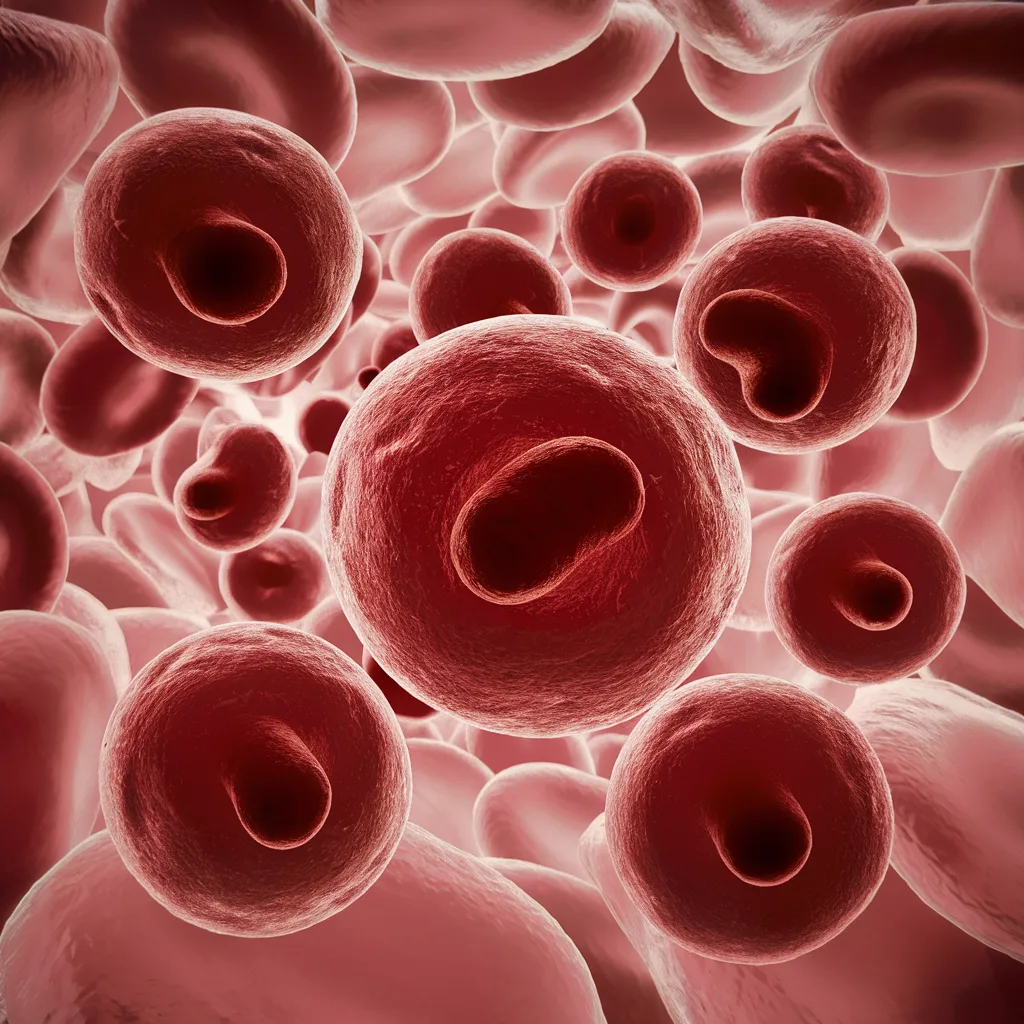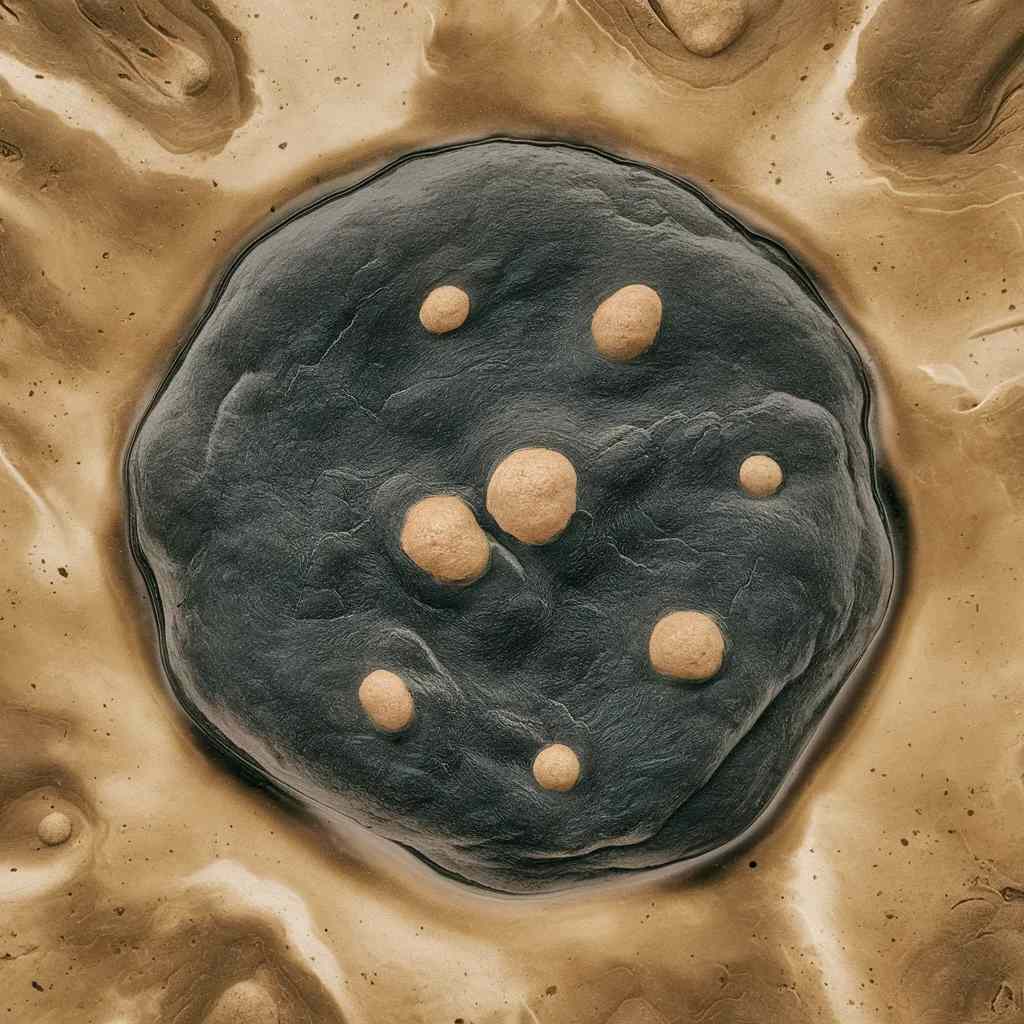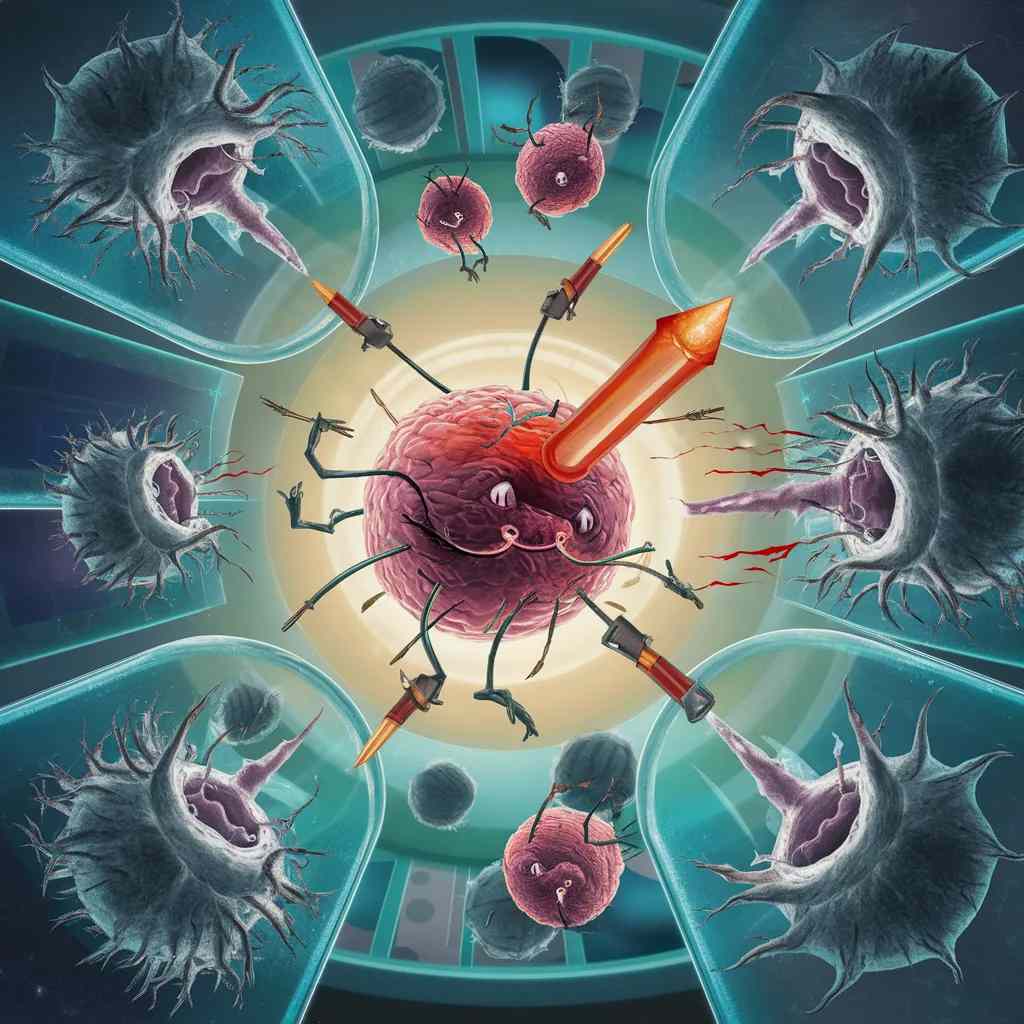Basophils

Table of Contents
Basophils are a type of white blood cell, specifically a granulocyte, that play a crucial role in the body’s immune response. They are characterized by the presence of large, dark-staining granules in their cytoplasm. Basophil are produced in the bone marrow and are part of the body’s innate immune system. Their primary function is to participate in allergic reactions and defense against parasites by releasing histamine, heparin, and other inflammatory mediators in response to allergens or pathogens. Histamine released by basophils triggers vasodilation and increased vascular permeability, leading to the characteristic symptoms of allergy such as itching, swelling, and redness.
Structure
Size
They are among the smallest of the white blood cells in the human body. Typically, their diameter ranges from about 10 to 14 micrometers. This size measurement may vary slightly depending on factors such as individual variation and the stage of activation of the basophil. Despite their small size, basophils play a significant role in the immune system, particularly in allergic reactions and defense against parasites, through the release of various inflammatory mediators stored in their cytoplasmic granules.
Nucleus

Like other white blood cells, basophils often have an uneven or lobed nucleus. White blood cells known as basophils are distinguished by the huge, dark-staining granules that they carry, which include heparin and histamine. The nucleus is somewhat obscured by these granules, making it challenging to determine its precise structure under a microscope. It is commonly described as having two or more lobes, though.
Cytoplasmic Granules
Histamine, heparin, and other inflammatory mediators are found in the cytoplasmic granules of basophils. When basophils are stained with particular dyes, like Wright stain, these dark-staining granules give the cells their distinctive blue-black appearance. They contribute to inflammation and the body’s defence mechanisms, and they are essential in immunological responses and allergic reactions.
Contents of Granules
White blood cells called basophil have granules that are filled with a variety of bioactive chemicals that are essential for both inflammatory and immunological responses. Histamine is one of these substances that sticks out since it is a strong vasodilator that increases blood vessel permeability and exacerbates the symptoms of inflammation and allergies. Furthermore, heparin, an anticoagulant that inhibits the development of blood clots and facilitates the migration of immune cells to areas of inflammation, is stored by basophils. Another component that modifies immune responses and adds structure to the extracellular matrix is proteoglycans.
Immunity
The main ways that basophil support immunity are through their roles in inflammation and allergic reactions. Basophils are important white blood cells in the immune system, although being less common than neutrophils and lymphocytes. Even though they are not as common as other white blood cells, basophils nevertheless have a big impact on the immune system.
They are primarily responsible for allergic reactions, triggering instantaneous hypersensitivity reactions in response to allergens. Basophils cause vasodilation and increased vascular permeability by releasing histamine, leukotrienes, and other inflammatory mediators.

Functions
Allergic Reactions
The primary actors in acute hypersensitivity reactions, like allergies, are basophils. Basophils identify allergens when they enter the body and release histamine and other inflammatory mediators from their granules in response. Histamine dilates and leaks blood vessels, which results in the itching, swelling, and redness that are typical allergy symptoms.
Defense against Parasites
Additionally, basophil support the body’s defence mechanisms against parasites. Basophil can be stimulated to produce compounds found in their granules, such as cytokines and histamine, when parasites infiltrate tissues. These substances aid in drawing other immune cells to the infection site and facilitate the expulsion of the parasites.
Modulation of Immune Responses
Immune response modulation is possible through interactions between basophil and other immune cells. They have the ability to release cytokines and chemokines that affect the way T cells and dendritic cells behave, among other immune cells, and so control the immune response as a whole.
Promotion of Inflammation
Basophils are involved in the promotion of inflammation in response to infection or damage, in addition to allergic reactions. They draw immune cells to the site of inflammation and start the process of tissue repair and healing by releasing histamine, heparin, and other inflammatory mediators.
Frequently Asked Questions(FAQ)
What do you mean by Modulation of Immune Responses?
Immune response modulation is possible through interactions between basophils and other immune cells. They have the ability to release cytokines and chemokines that affect the way T cells and dendritic cells behave, among other immune cells, and so control the immune response as a whole.
Write about Cytoplasmic Granules?
Histamine, heparin, and other inflammatory mediators are found in the cytoplasmic granules of basophils. When basophils are stained with particular dyes, like Wright stain, these dark-staining granules give the cells their distinctive blue-black appearance. They contribute to inflammation and the body’s defence mechanisms, and they are essential in immunological responses and allergic reactions.
Define Basophils?
Basophils are a type of white blood cell, specifically a granulocyte that play a crucial role in the body’s immune response. They are characterized by the presence of large, dark-staining granules in their cytoplasm. Basophil are produced in the bone marrow and are part of the body’s innate immune system.
Related Articles




